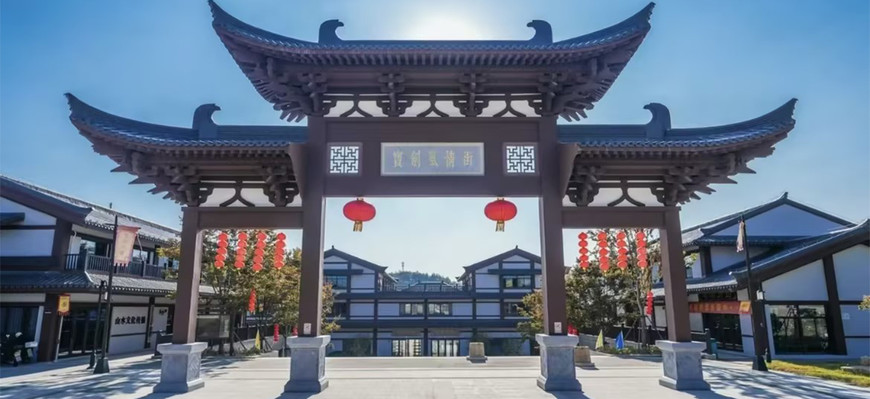History of The Longquan Sword
Posted by MRL on Aug 13th 2024
Museum Replicas launches new brands in Katana - Bushido and Shogun
“The Longquan Sword began in the Spring and Autumn Period and the Warring States Period, more than 2,600 years ago. At the end of the Spring and Autumn Period, Ou Yizi, the originator of the sword master in Yue, was the founder of the Longquan sword. Ou Yizi was born during the period of disputes among the nations of the Eastern Zhou Dynasty. He discovered the difference in the properties of copper and iron, and forged the first iron sword, "Longyuan", which created the first cold weapon in China.

The Yuejue Book records that the King of Chu ordered Fengbeard to look for Ou Yezi in Yuedi and asked him to make a sword. So Ou Yezi traveled all over the famous mountains and rivers of the south of the Yangtze River, looking for places where he could produce iron, cold spring and bright stones. Only when these three things were available could he forge a sharp sword. Finally, he came to Longquan. After two years, he finally forged three swords: the first was called "Longyuan", the second was called "Tai'a", and the third was called "Gongbu". These three swords cut copper and chop iron, just like cutting mud to remove soil. The King of Chu was overjoyed when he saw the sword, and gave this place "Jianchi Lake". Over the past thousand years, Ou Yezi's sword-casting skills have taken deep root in Longquan and have been passed down from generation to generation until today. In order to commemorate Ou Yizi, the originator of Longquan Sword, later generations built the "Jianchi Pavilion" and "Ou Yizi General Temple" in Jianchi Lake, shaping the bronze statue of Ou Yizi and becoming a thousand-year-old monument.
Ganjiang was a native of Wu, and he came from the same school as Ou Yezi, the first famous swordsmith in the Spring and Autumn Period. Because he got three swords (one of which was the fish intestine sword used to stab Wang's colleagues) from the hands of the Yue people, and knew Ganjiang, he ordered Ganjiang to cast two more sharper swords for him. According to the records of the "Wu Yue Spring and Autumn Period", Ganjiang Moxie cut off his nails and hair and threw them into the furnace, and refined two swords, one yin and one yang. These two swords were born, and they were indeed extraordinary, blowing out broken gold and being extremely sharp. Ganjiang and Moxie couple jointly forged these two swords, which happened to be one yin and one yang, so they named the sword after them. The yang sword was called Ganjiang, and the yin sword was called Moxie.
Japanese samurai swords originated in the Tang Dynasty in China. During the Sui and Tang Dynasties, Japan did not have its own knife-making technology. It produced swords entirely by imitating and learning from Chinese knife-making technology. Most of the Japanese swords at that time maintained the basic characteristics of the Han Dynasty Ring Head Sword. In the Battle of Baijiangkou in the Tang Dynasty, due to the Tang Hengdao's ability to cut and break armor and its flexibility exceeding that of the Japanese swords of the same period, the Japanese samurai wearing leather armor had no protective ability, and the elite troops of the whole country were defeated. After that, Japan fell into extreme fear.
After a few years of panic, the Japanese recognized their own strength, so they studied in the Tang Dynasty with humility, and sent more than ten batches of Tang envoys to China to study, many of whom were skilled craftsmen in Japan at that time. They brought the knife-making skills of Tang Hengdao back to Japan, and after imitation, they gradually formed the Japanese samurai sword. Japan is collecting a beautiful Tang knife in the warehouse, which is very precious and is regarded as a national treasure of Japan. The samurai sword occupies an absolute position in the world's cold weapons with its excellent performance and enjoys the best reputation.
Longquan is named after the sword, and it shines with porcelain! Longquan celadon began in the five dynasties in the early 10th century and flourished in the Song Dynasty. It is famous at home and abroad for its clear sky like autumn and quiet "brother and brother" kiln porcelain like the deep sea.
During the Three Kingdoms period, Cao Zhi had a poem that said, "Beautiful jade gives birth to jade stones, and swords come out of the dragon's abyss." This allusion is used. In Tang Dynasty poet Wang Bo's "Preface to Tengwang Pavilion", there is "Dragon Light Shooting the Ruins of Bullfighting", Meng Chun's poem "I heard of Ou Yezi in the past, but now I know the lake of Sword Pond. How many springs are there in a row, and what has happened in a thousand years. Divine power should be transformed, and spiritual things should not be mud. Trivial Chinese iron, according to legend, comes out of the furnace."
In the Tang Dynasty, the literati were more poetic about the Longquan sword. Li Bai has the phrase "Ning knows the grass, but there is a Longquan under his waist", which shows that the soldiers and civil warriors in the prosperous Tang Dynasty generally admired the Longquan sword.”



